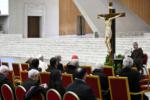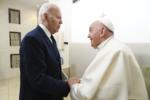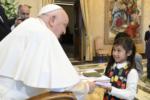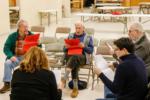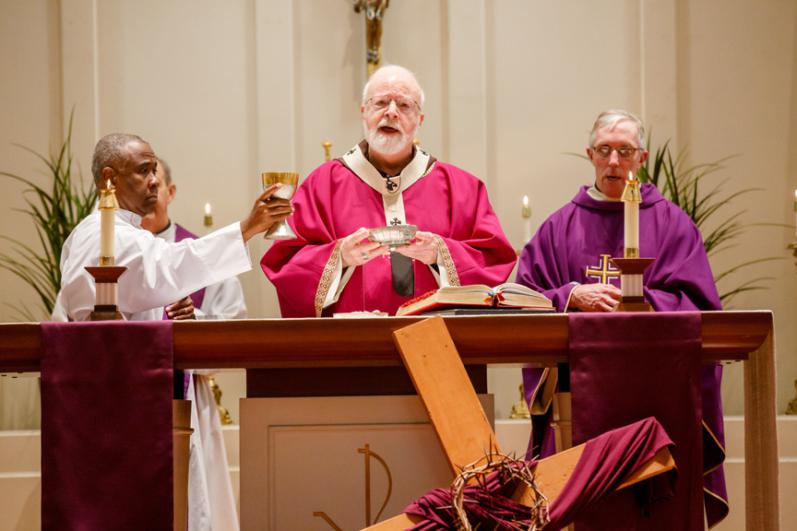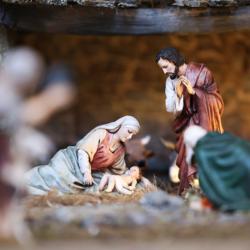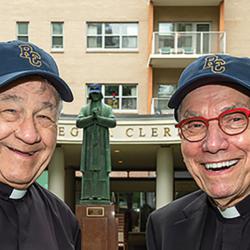Helping priests grow as effective leaders of worship
When a man is ordained a priest, the bishop hands him a chalice with wine and a paten with hosts to be consecrated. He instructs the newly ordained: "Understand what you do!" The Latin word "agnosco," translated in the ritual as "understand," carries a fuller meaning. It encompasses verbs such as recognize, realize, discern, and know. At this solemn moment in his life, the Church isn't asking the priest simply to have a correct idea of what he is doing. The Church charges him to grasp at a very deep level the reality of what God is doing when he serves as a leader of worship.
Last summer, Pope Francis summoned clergy and laity to take up the continuing liturgical formation of the people of God. This is the focus of his apostolic letter, "Desiderio desideravi," its opening words taken from Jesus at the Last Supper: "I have greatly desired to eat this Passover meal with you before I suffer." (Luke 22:15).
Beyond the thorough theological and historical understanding of the sacred liturgy that is required of priests, Pope Francis called them to celebrate the Mass with an appreciation of the beauty of worship that God deserves. He instructs priests in what he refers to as "ars celebrandi," the art of celebrating. This not only involves avoiding inappropriate actions that can distract worshippers. It means paying careful attention to what he says and does, and how thoughtfully he speaks and moves as a presider at Mass.
To help the priests of our archdiocese to deepen their understanding of the Mass today and, moreover, to develop their skill as leaders of worship, Cardinal Sean gathered priests for their annual Spring Convocation with that focus: ars celebrandi. Leading the program was Father Paul Turner, a well-known liturgical expert and pastor of the Cathedral Parish of Kansas City, Missouri. All priests were given a copy of Father Turner's book, "Ars Celebrandi: Celebrating and Concelebrating Mass."
What points does Father Turner make to guide our worship? Two examples from his book may help. They demonstrate the importance of simple but significant aspects of Catholic worship. One pertains to the simple and yet very profound gestures which a priest makes at the altar, beginning at the preparation of the gifts and culminating with the doxology and the great Amen. The second example is about the use of silence at Mass, something that is all too easily overlooked.
Gestures
For those who remember the Mass before 1970, one of the most obvious and startling changes that took place when the new order of Mass was initiated after Vatican II was making all the actions of the priest visible to the worshippers. This necessitated a free-standing altar, which meant either moving an existing altar forward or creating a new one. This enabled people to see as well as hear the actions of the priest as he prepares the altar and then offers then prays the Eucharistic prayer. Previously, only an altar server could see -- or at least catch a glance of -- this very central action of the Mass.
To appreciate the meaning of this very solemn action, Father Turner points out that the General Instruction of the Roman Missal (GIRM) describes three distinct gestures by the priest when he handles the chalice and paten with hosts. A few illustrations will help to visualize these motions.
After the gifts of bread and wine are set upon the altar, the paten and chalice are each "slightly raised above the altar." Accompanying this action is a simple prayer of blessing, which the priest can even say by himself: "Blessed are you, Lord God of all creation..."
At the consecration, as the priest says the words of Jesus, "Take this all of you and eat of it, for this is my body ... this is the chalice of my blood ..." He does so with the gifts only "slightly raised" above the altar. Then "he shows the consecrated host to the people" and later "he shows the chalice to the people." Previously, these elements had to be elevated high above the priest since they could not otherwise be seen.
Finally, at the end of the Eucharistic Prayer, the GIRM says that the gifts of the consecrated bread and wine are to be "raised" up as the priest prays or sings the doxology -- the words "Through him and with him and in him, O God almighty Father . . ." This concluding gesture now stands out as a dramatic visualization of what is happening at every Mass. Jesus, raised high on the cross, offers himself to the Father and through the Holy Spirit we join in that one perfect sacrifice of praise. And the response of the assembly is the great "Amen" that can be spoken or, even better, sung by the people.
Silence
The GIRM echoes the call of the "Constitution on the Sacred Liturgy" to engage people in "full, conscious and active participation." Father Turner guides priests as to how to lead liturgical actions that involve many movements, such as speaking, singing, standing, and kneeling. He also reminds them of the importance of silence at the right places. Examples of this are the pauses that allow the whole congregation to reflect quietly on what is happening.
For instance, when the priest says "let us pray" at the opening prayer, the Church calls for the priest to pause "in silence for a while" so that each person present can recollect their intentions. The prayer that follows is called the Collect as it gathers the congregation's prayers into the prayer of the whole Church on this particular occasion. Another pause is fitting after the homily when "a period of silence may be observed" so that we take into our minds and hearts the message we have heard. Following the distribution of Holy Communion, the GIRM indicates that yet another "period of silence may be observed," a welcome moment to add a personal note to the thanksgiving of the Church, the Eucharist, which has taken place. Taking these rubrics to heart, priests can avoid rushing through the Mass and allow people time to internalize what is unfolding before them.
To be sure, the art of celebrating extends to much more, contained in Father Turner's exposition that will help priests and people pray with greater attentiveness to the beauty of the Mass that is the gift and fruit of ongoing reform in the Church.
Father John E. MacInnis is a senior priest of the archdiocese in residence at St. Pius Fifth, Lynn.





